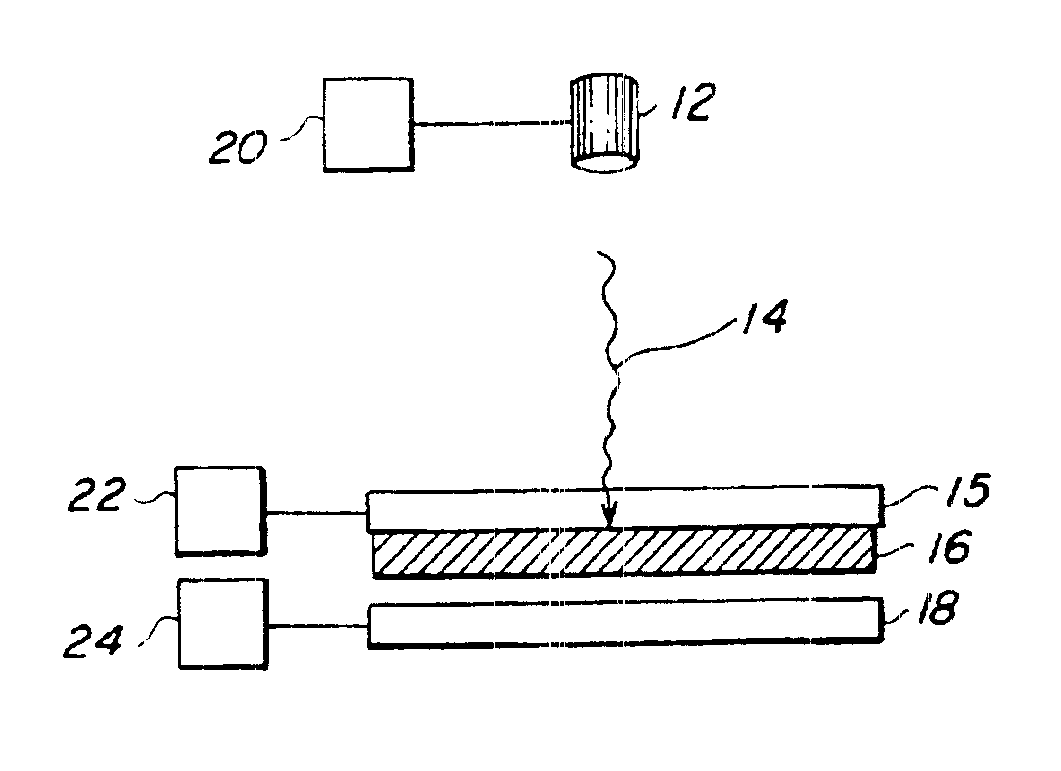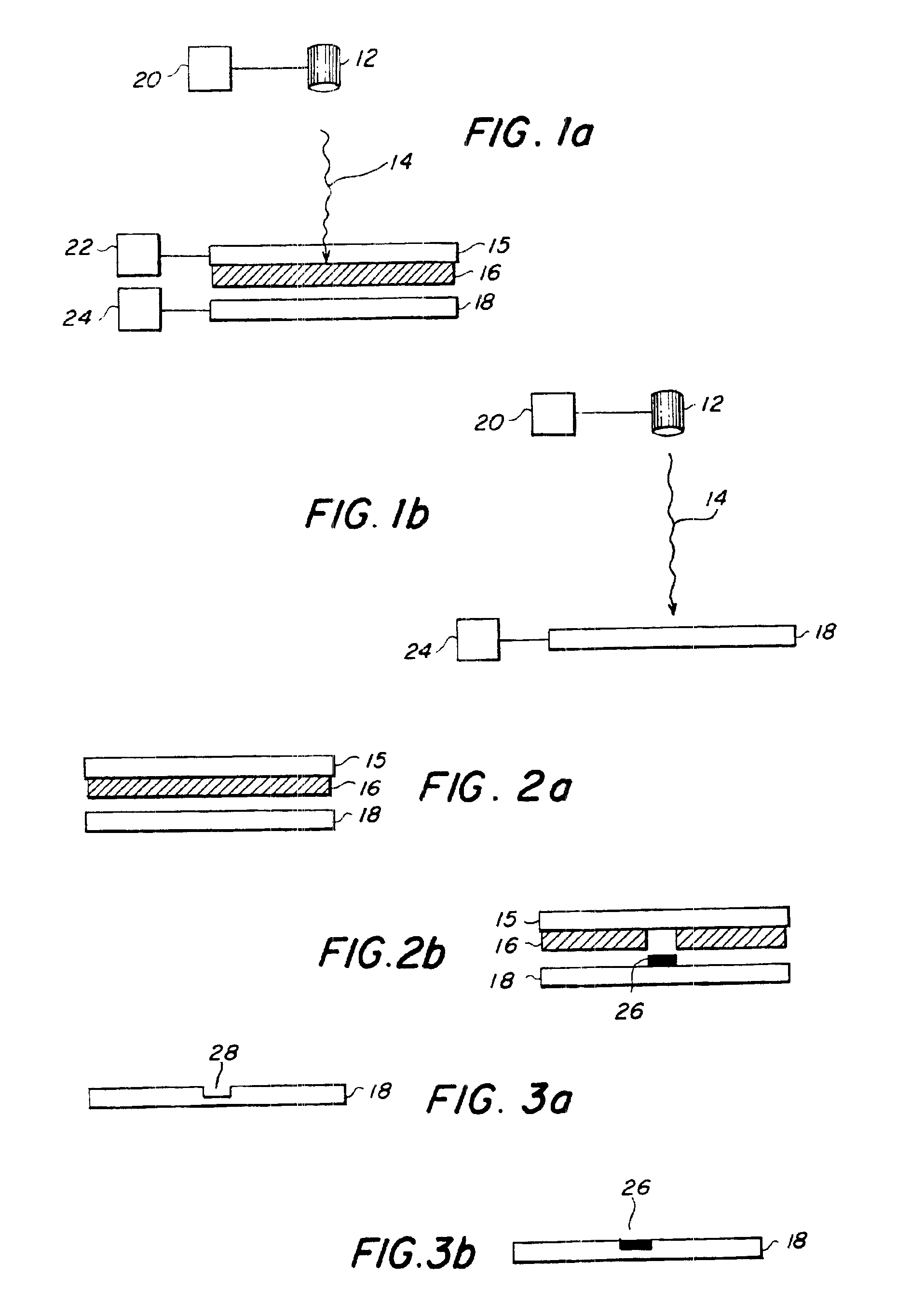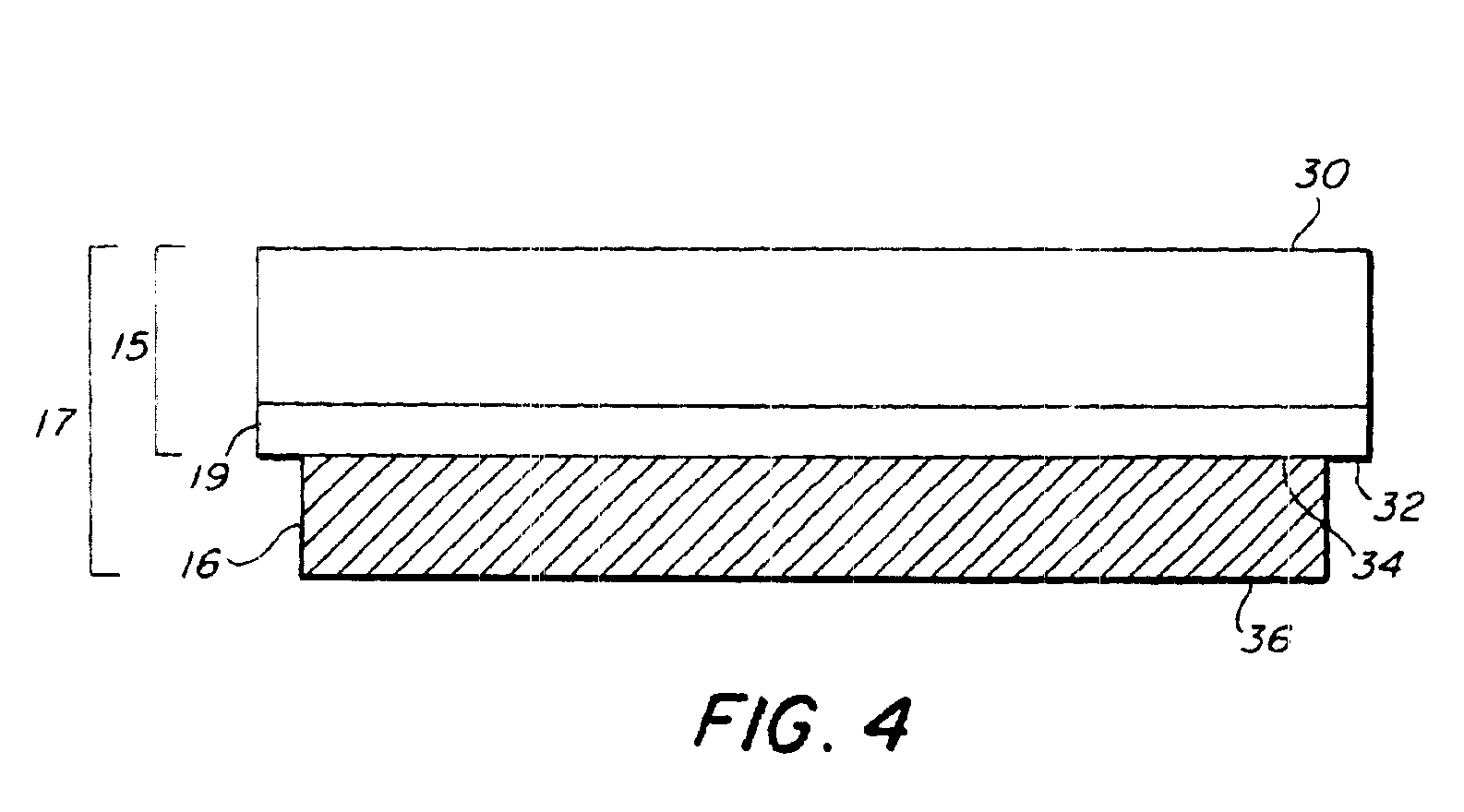Generation of viable cell active biomaterial patterns by laser transfer
a technology of laser transfer and active biomaterials, applied in the direction of vacuum evaporation coating, sputtering coating, railway signalling, etc., can solve the problems of inability to adapt to large-scale rapid prototyping, limit the flexibility and capability of these approaches, and wet techniques are inherently limited by viscoelastic properties, so as to improve existing tissue.
- Summary
- Abstract
- Description
- Claims
- Application Information
AI Technical Summary
Benefits of technology
Problems solved by technology
Method used
Image
Examples
example 1
[0082]Transfer of living E. coli bacteria from a frozen support—The transfer material was living E. coli cells. The matrix material was Luria-Bertani (LB) broth and kanamycin (50 μg / ml). The spot size was 0.09 cm2 and the 193 nm energy density was 0.2 J / cm2. The composite material 16 was frozen to the laser-transparent support 15. SEM micrographs showed that there was no damage to the transferred cells.
example 2
[0083]Transfer of living E. coli bacteria from a room temperature support—The transfer material was living E. coli cells. The matrix material was LB broth, agar, and kanamycin. The composite material 16 was coated on the laser-transparent support 15 and kept at room temperature. The same laser parameters as above resulted in successful transfer.
example 3
[0084]Transfer of living E. coli bacteria from a room temperature support—The transfer material was living GFP marked E. coli cells. The matrix material was LB broth, kanamycin, glycerin, and barium titanate nanoparticles. This transfer was performed with a different pulsed UV laser at 355 nm, a spot size of 65 microns, and an energy density of 1 J / cm2. A SEM micrograph taken under UV light showed fluorescent activity in the transferred cells, proving that the cells were still living.
PUM
| Property | Measurement | Unit |
|---|---|---|
| Temperature | aaaaa | aaaaa |
| Temperature | aaaaa | aaaaa |
| Temperature | aaaaa | aaaaa |
Abstract
Description
Claims
Application Information
 Login to View More
Login to View More - R&D
- Intellectual Property
- Life Sciences
- Materials
- Tech Scout
- Unparalleled Data Quality
- Higher Quality Content
- 60% Fewer Hallucinations
Browse by: Latest US Patents, China's latest patents, Technical Efficacy Thesaurus, Application Domain, Technology Topic, Popular Technical Reports.
© 2025 PatSnap. All rights reserved.Legal|Privacy policy|Modern Slavery Act Transparency Statement|Sitemap|About US| Contact US: help@patsnap.com



